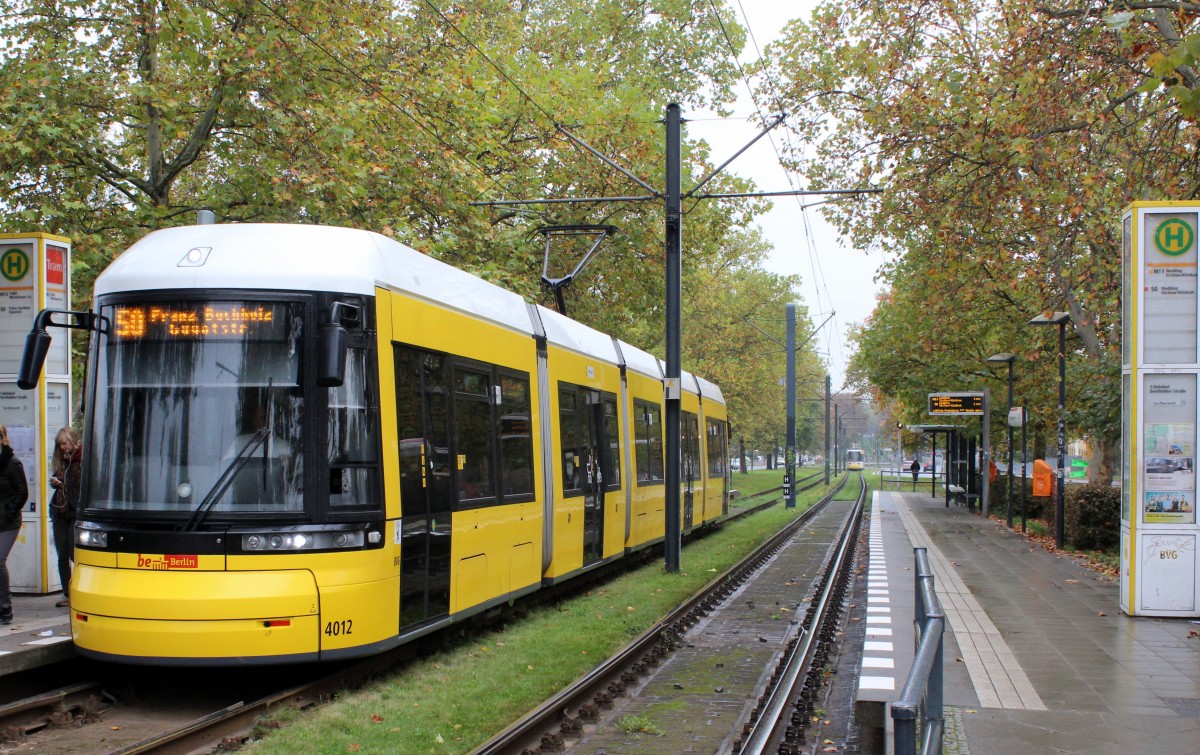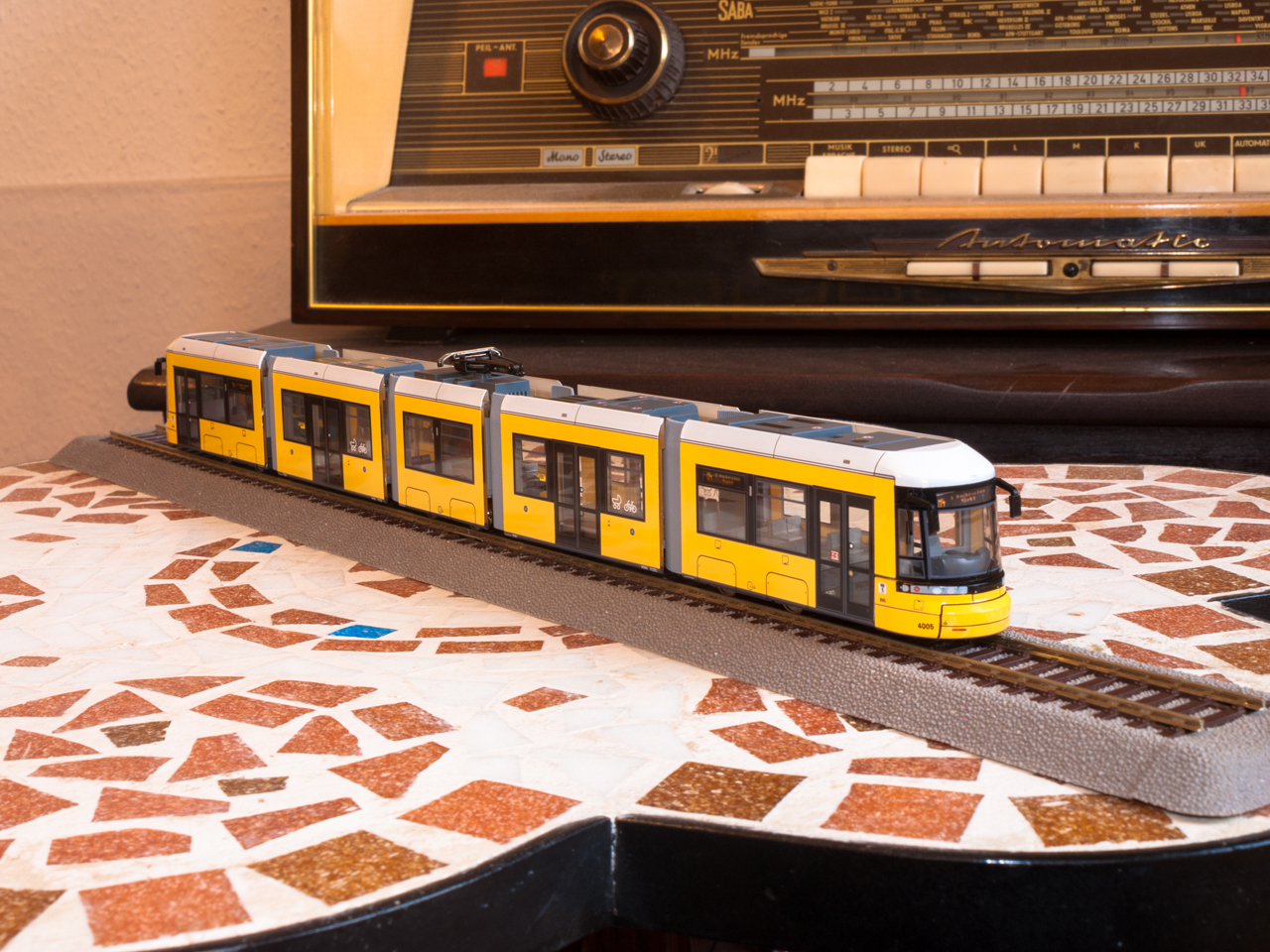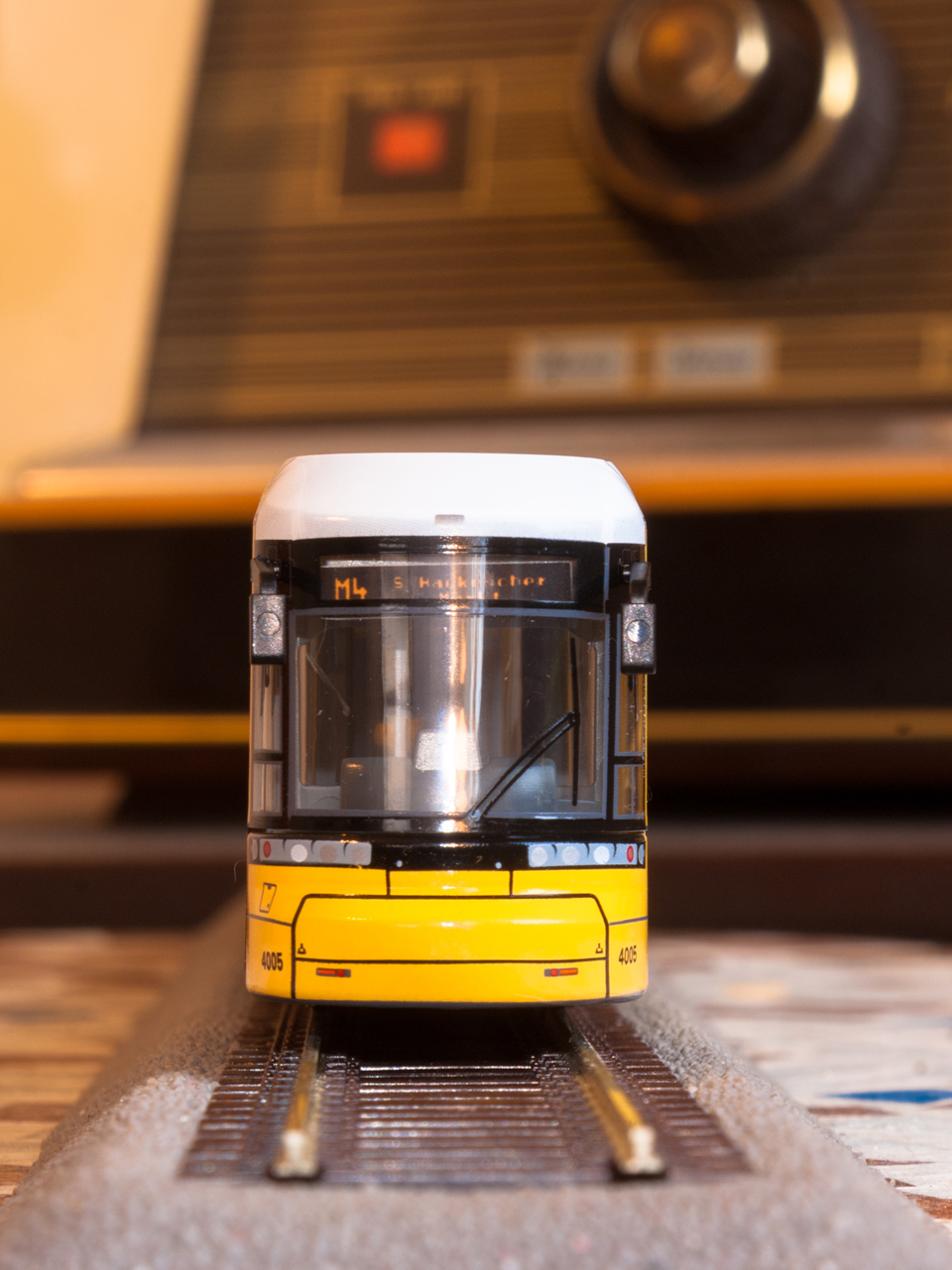Yellow as the Sun: Bombardier Flexity Berlin, Type GT6-08/F6Z of BVG, by Halling
Afternoon all!
Always trying to provide a catchy tag line for my blog entries, what came to my mind this time was that the subject of today's entry will be marked by an ever-friendly colour which at this time of year will most certainly be doubly attractive for many of us!
Those of you who may have tapped into the field of urban transport worldwide may be aware of the fact that, after Melbourne and Saint Petersburg, the Berlin tram system is the third-largest in the world, with a total route length of 189.4 kilometres as of late 2015. Opened in 1865 and utilising horse-drawn trams till electrification began in 1881, the network, such as it exists today, has been operated by Berliner Verkehrsbetriebe – today abbreviated BVG – since 1929. It is also worth noting that due to the decades-long division of Berlin during the Cold War and radically different political developments on many levels between former West and East Germany, the Berlin tram system of this day covers mostly former East Berlin only, whereas in old West Berlin, decisions which began to be made in 1954 resulted in the suppression of all tram operations by 1967 in favour of individual traffic, buses and, eventually, the Underground. However, by the 1990s and with Germany having been reunited, the realisation of new potentials of this mode of transport led to gradual refurbishment and evolution of the remaining tram system, which since that time has even begun to slowly expand back into old West Berlin again.
That, of course, really is only a highly abridged summary of what in fact is a very complex and faceted history, which you may, for example, follow up on Wikipedia.
At present, the system comprises 22 individual lines, of which nine were uprated to "Metrotram" status as part of a modernisation scheme introduced in December 2004. To complement the city's extensive suburban railway system, BVG had redrawn much of their tram and bus system to better cover those inner urban areas not within immediate reach of the suburban system, with the so-called Metrotram and Metrobus lines usually providing 24-hour service throughout the year and at 10-minute intervals at daytime and 30 minutest at the longest by night. The non-Metrotram lines serve to cover numerous outlying areas of the city.
As of today, BVG's tram inventory for revenue service consists of 105 single-cab ADtranz GT6N cars and 45 dual-cab GT6N-ZR cars, obtained from 1992 till 2003, and a growing fleet of the new Bombardier Flexity Berlin trams in four different variants. As per the original order, the latter comprise the following numbers:
-
24 7-segment, single-cab cars; designated GT8-08ER/F8E; 8000 series running numbers,
-
35 5-segment, dual-cab cars; designated GT6-08ZR/F6Z; 4000 series running numbers,
-
20 5-segment, single-cab cars; designated GT6-08ER/F6E; 3000 series running numbers,
-
20 7-segment, dual-cab cars; designated GT6-08ZR/F8Z; 9000 series running numbers.
Where GT6-08 and GT8-08 are shorthand for "Articulated Tram (Gelenktriebwagen) with six/eight wheelsets, 2008 design, single/dual cab (Einrichtungs-/Zweirichtungsausführung); while F6E, F6Z, F8E and F8Z are internal BVG designations spelling out as "Flexity car, six/eight wheelsets, single/dual cab (Einrichtungs-/Zweirichtungsausführung)".
Do note that there is not really a uniform type classification system valid across all German tram systems, which I think I will write a few lines about in a separate blog entry!
BVG have also retained an operational reserve of twenty CKD KT4D trams inherited from East Berlin's People-Owned Enterprise Berliner Verkehrsbetriebe (BVB), which are expected to be withdrawn by 2017 when a sufficient number of Flexity trams are available.
The first four Flexity Berlin cars, serving as pre-production prototype and evaluation units, were rolled out in 2008 and delivered between September 2008 and January 2009. These four prototypes comprised one example each of the 5- and 7-segment versions with one and two cabs respectively. The BVG board agreed to obtain an initial batch – as described above – on 20 June, 2009, with the first deliveries having commenced on 5 September, 2011. The framework agreement with Bombardier specifies a total of up to 206 cars. In June 2012, 39 additional cars were ordered, bringing the total number ordered as of now to 142 – including the prototypes. Deliveries of these 2nd batch trams commenced the same year.

F6Z set 4012 at Bornholmer Straße, working Line 50 for Französisch Buchholz, Guyotstraße. Photo by Kurt Rasmussen.

F8E set 8019 at Otto-Braun-Straße/Mollstraße intersection, working Line M4 for Hackescher Markt Suburban Railway Station. This being a single-cab set, note the absence of rear view mirrors on the left hand side. Photo by Kurt Rasmussen.
Technically, the Flexity Berlin is strongly influenced by the ADtranz Incentro tram – as operated in Nottingham and Nantes – which was added to the Bombardier portfolio when ADtranz was bought up by Bombardier in 2001. Most importantly, the Flexity Berlin is characterised by a 100% low floor configuration and bogies – possibly more properly referred to as running gears – with independent wheels rather than traditional wheelsets. The visual styling was provided by IFS Design and has been nominated for the 2011 German Design Award, and won the 2010 IF Design Award.
With the 5-segment units measuring 30.8 metres in length and the 7-segment sets being 40 metres long, the body width is 2.4 metres, and the height 3.45 metres. The minimum curve radius is 17.25 metres, while service weights range from 37.9 tonnes for the F6E sets to 39.1 tonnes for the F6Z, 50.1 tonnes for the F8E, and 51.5 tonnes for the F8Z.
The 5-segment sets are powered by eight wheel-mounted 50 kW asynchronous AC traction motors, while the 7-segment sets have twelve motors, for a total power rating of 400 and 600 kW respectively. The bogie/running gear underneath the pantograph carrying body segments are unpowered. Wheel diameter is 660 mm when new and floor height 355 mm.
Passenger capacities are:
-
60 seated, 129 standing (F6E),
-
52 seated, 132 standing (F6Z),
-
84 seated, 164 standing (F8E),
-
72 seated, 173 standing (F8Z).
In addition to the larger order by BVG, Strausberger Eisenbahn, operating a small 6.2 kilometre tram route in the town of Strausberg east of Berlin, obtained two 5-segment dual-cab Flexity Berlin sets, which entered service in 2013.
Now, as for the model…! As I mentioned elsewhere, models of underground sets, LRVs and trams are probably more of a niche subject generally, so a lot of what does exist is available either as kits, as limited run productions, or from small suppliers (or all at once). It may also mean that the overall design of such models tends to be a bit simpler than, for example, railway models from large producers with corresponding design and production facilities, though of course, there appears to be a lot of variation here, too.
The Flexity Berlin tram model is produced by Austrian specialty producer Halling. So far, only the 5-segment dual-cab variant has been produced, for distribution both by Halling themselves and by BVG through their merchandising department. Far as I am informed, two versions have been produced so far, representing sets 4002 and 4005. Like the majority of Halling LRV and tram models, the Flexity Berlin model is available both powered and unpowered, and it is possible to equip unpowered models with motor units if desired. For the moment, I personally am quite happy with the unpowered variants!

In my impression, Halling models have evolved over the years, though I do not claim to have expert knowledge here. Generally, their models were designed with bodyshells made of transparent plastic painted as appropriate, and with few physical surface details or none at all, which is to say that items like panel lines, door buttons or others were only printed on. Of course, it may be argued that on modern trams in particular, body surfaces are generally smooth and with few raised or recessed structures in any case, so I can, in a way, understand this reasoning.
Halling models usually do come with a smallish but varying number of add-on parts, mainly comprising rear view mirrors and, in many cases, sheets with a variety of adhesive destination signs. Naturally, you might always choose to enhance these models further with your own means, which I may well elect to do at some point as I've noticed a couple of items which might merit addition, such as turn signal casings on the body sides or perhaps cab details…

BVG elected not to specify MU capability for their Flexities, so the removable parts of the frontal skirts conceal only fold-out emergency towing couplers. Note that the rear view mirrors, as provided, depict the stowed position only. Ordinarily, the right hand mirror on the cab travelling in front will be extended automatically when the corresponding cab is active, while the left hand mirror can be folded out as required. Obviously, drivers will need to ensure sufficient lateral clearance with oncoming trams!

Having mentioned possibly adding turn signal casings further up, I suppose you can see where the lateral turn signals are located. You may also notice that small lateral wipers are provided on the cab side windows to ensure sufficient mirror vision, which is an item us at LVB in Leipzig also have on our low floor trams – though only on the right hand window as we have single cab trams only.

I figure I might also elect to tweak the pantograph a bit as the head contacts have open run-off ends. The motor unit, should I eventually decide to outfit the model thus, would go on the bogie underneath the 3rd body segment.

Rooftop equipment on modern trams mostly comprises only casings for traction and auxiliary inverters, as well as A/C modules.
Thanks for reading and do watch this space for possible tweaks I might yet apply to this model!
-
 2
2




6 Comments
Recommended Comments
Create an account or sign in to comment
You need to be a member in order to leave a comment
Create an account
Sign up for a new account in our community. It's easy!
Register a new accountSign in
Already have an account? Sign in here.
Sign In Now